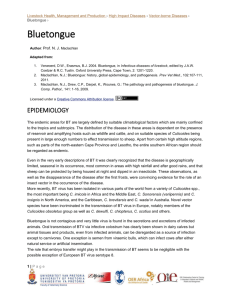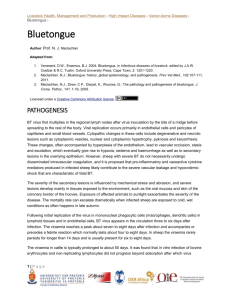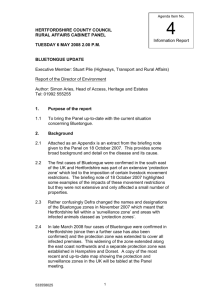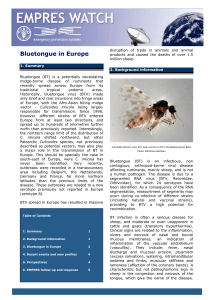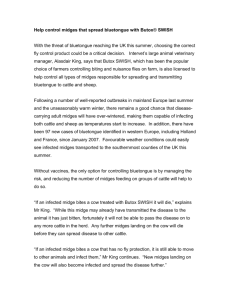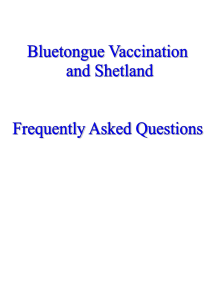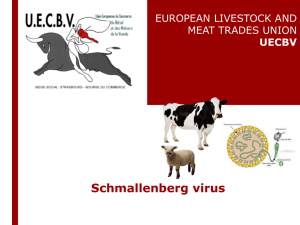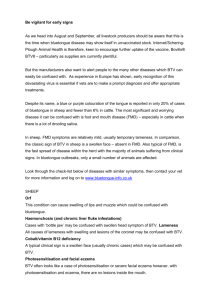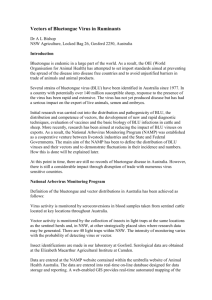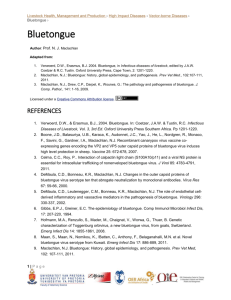Bluetongue
advertisement
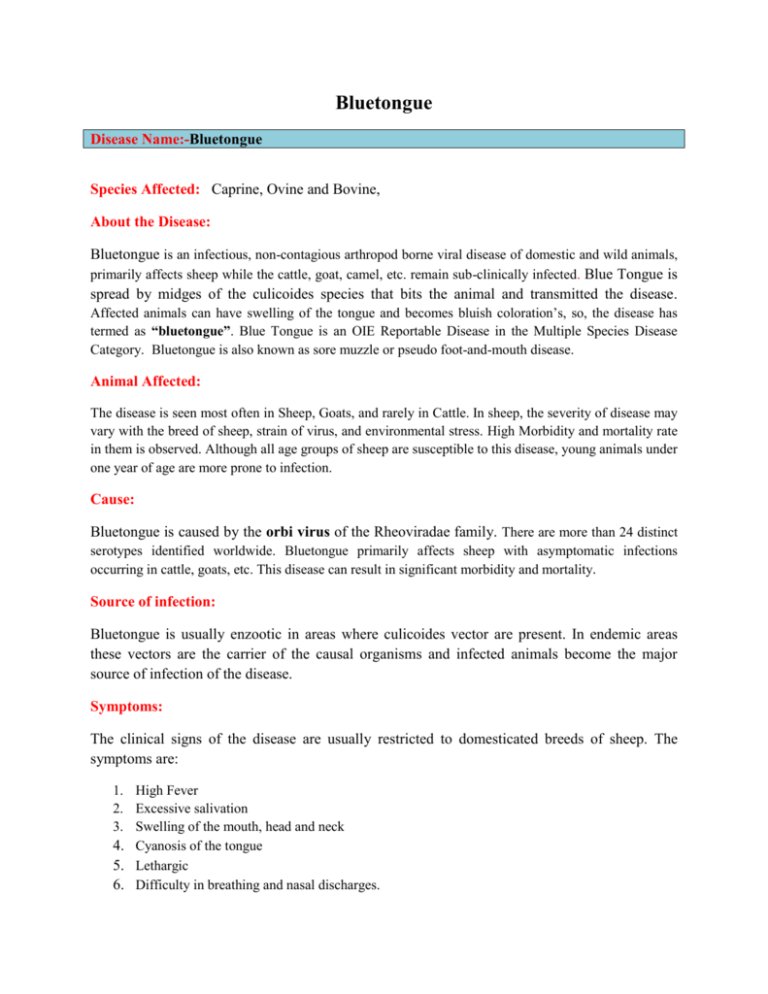
Bluetongue Disease Name:-Bluetongue Species Affected: Caprine, Ovine and Bovine, About the Disease: Bluetongue is an infectious, non-contagious arthropod borne viral disease of domestic and wild animals, primarily affects sheep while the cattle, goat, camel, etc. remain sub-clinically infected. Blue Tongue is spread by midges of the culicoides species that bits the animal and transmitted the disease. Affected animals can have swelling of the tongue and becomes bluish coloration’s, so, the disease has termed as “bluetongue”. Blue Tongue is an OIE Reportable Disease in the Multiple Species Disease Category. Bluetongue is also known as sore muzzle or pseudo foot-and-mouth disease. Animal Affected: The disease is seen most often in Sheep, Goats, and rarely in Cattle. In sheep, the severity of disease may vary with the breed of sheep, strain of virus, and environmental stress. High Morbidity and mortality rate in them is observed. Although all age groups of sheep are susceptible to this disease, young animals under one year of age are more prone to infection. Cause: Bluetongue is caused by the orbi virus of the Rheoviradae family. There are more than 24 distinct serotypes identified worldwide. Bluetongue primarily affects sheep with asymptomatic infections occurring in cattle, goats, etc. This disease can result in significant morbidity and mortality. Source of infection: Bluetongue is usually enzootic in areas where culicoides vector are present. In endemic areas these vectors are the carrier of the causal organisms and infected animals become the major source of infection of the disease. Symptoms: The clinical signs of the disease are usually restricted to domesticated breeds of sheep. The symptoms are: 1. High Fever 2. Excessive salivation 3. Swelling of the mouth, head and neck 4. Cyanosis of the tongue 5. Lethargic 6. Difficulty in breathing and nasal discharges. 7. Lameness. 8. Acute and febrile and finally 9. Death (due to Respiratory failure). Other animals such as Goats and Cattle may or rarely show any symptoms (asymptomatic). Control and Management: To prevent and control of Bluetongue, the following measures should be taken: 1. Control of arthropods (Culicoides)/ insect population using insecticide cautiously and good water management. Identifying breeding grounds and breaking the breeding cycle. 2. Grazing of the animals should be avoided in areas where there is lot of vector. 3. Good herd management and quarantine of sick animal should be made. 4. Immunization of susceptible animal. Vaccines: Vaccines are available but are specific for each serotype. Avianised live virus vaccine and tissue culture vaccine are available for vaccination against Bluetongue. Attenuated live vaccine, killer vaccine and Recombinant vaccines have been developed and used. Monovalent attenuated live vaccine has got limitation in en enzootic areas where several antigenic types of virus may exist. In that case, polyvalent vaccine may be the choice. Meteorological Occurrence: The Disease is more prevalent in late summer and early autumn which makes congenial environment for the multiplication of the vector. The disease is also favorable when the weather is warm and wet and sudden climatic changes also enhance the outbreak of the disease. Prepared by: Dr. Peter N JRF, NADRS, Manipur. Disease Investigatory Laboratory Directorate of Veterinary, & A.H. Services, Manipur
